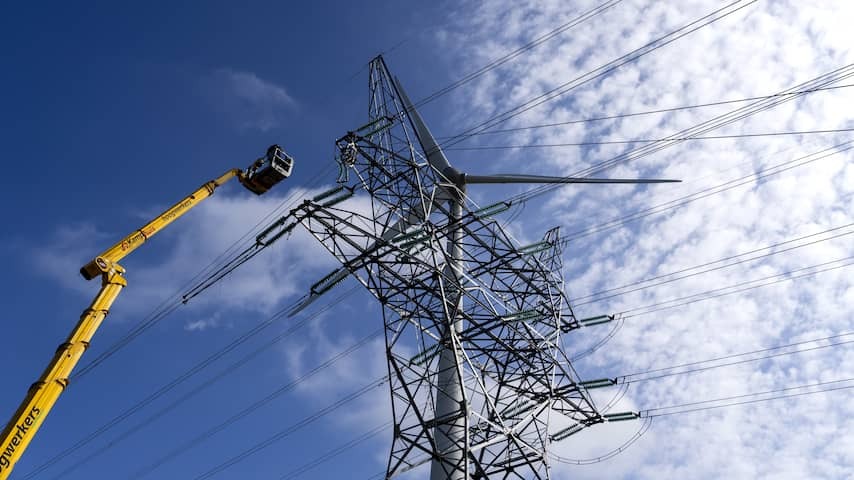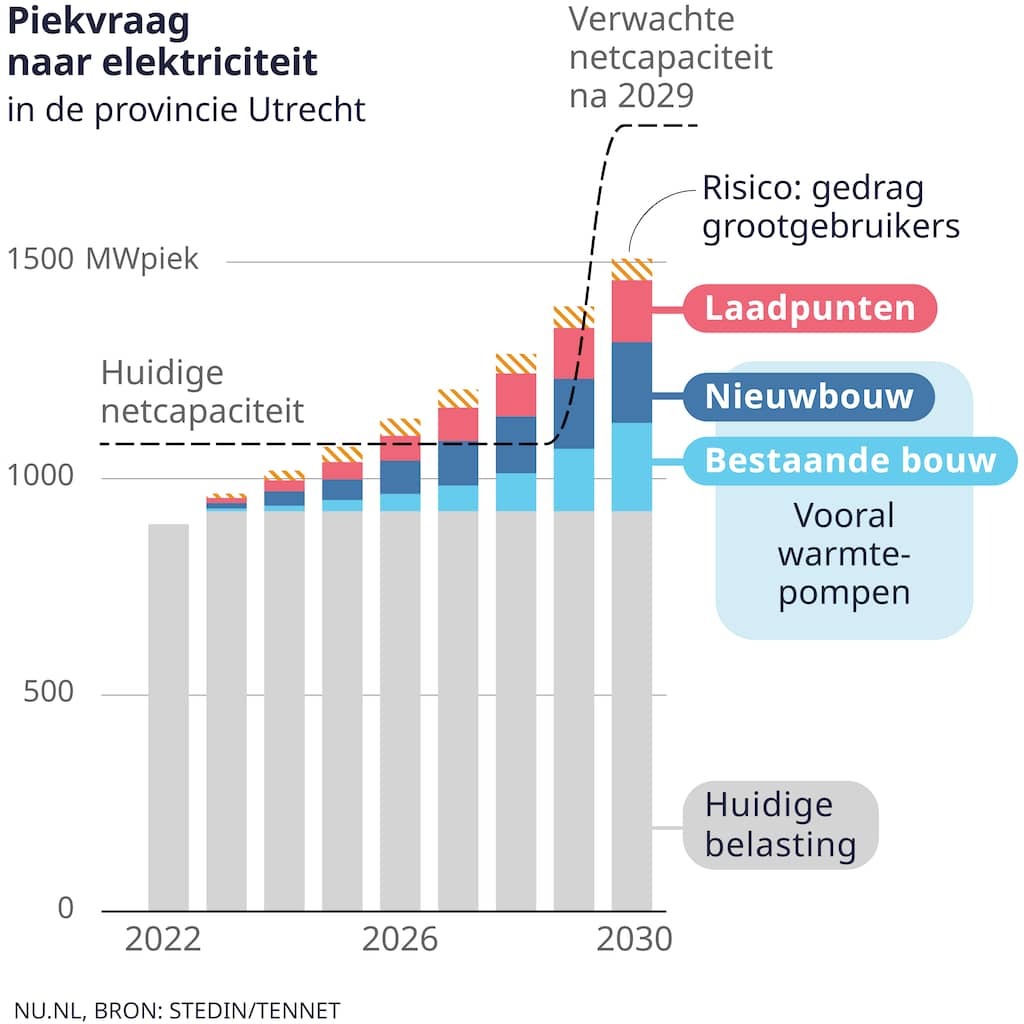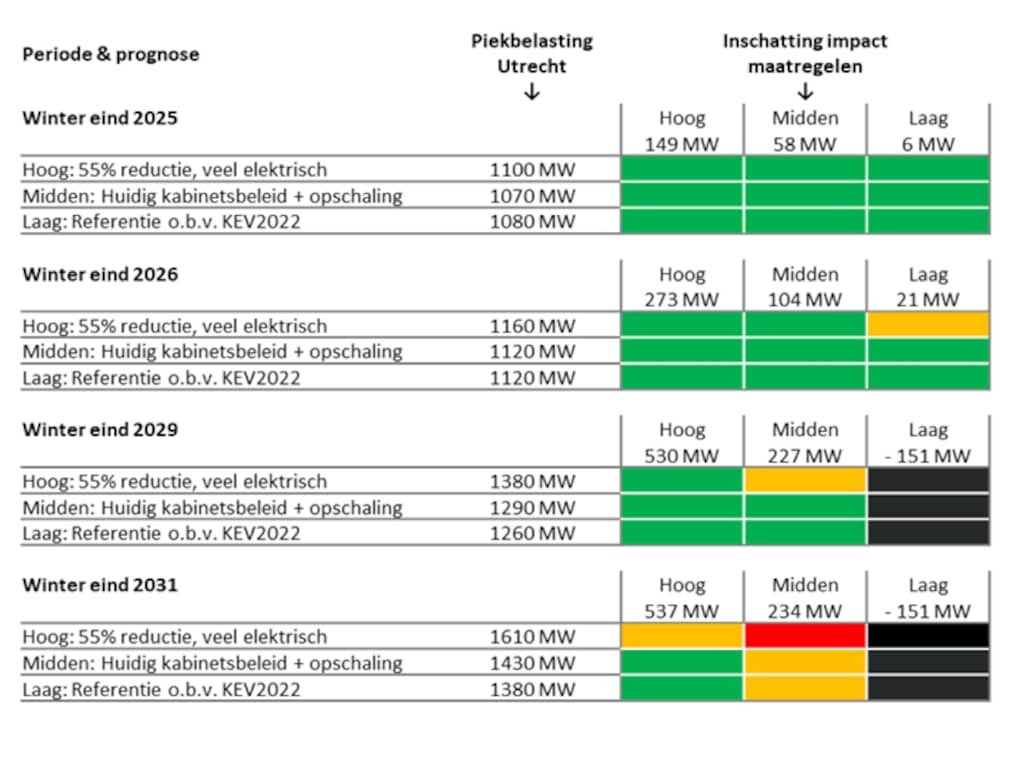
The years-long delay that grid operator TenneT is experiencing in expanding the power grid in the province of Utrecht also creates an additional risk of power outages between 2029 and 2033. Grid operators already warned about this at the end of last year.
As many as 200,000 homes could be without power in the future due to overloading of the power grid, NU.nl wrote in March. Grid operators fear that peak power consumption is rising so quickly that the grid in the so-called FGU region (Flevopolder, Gelderland, and Utrecht) simply cannot handle it at certain times.
Companies are already being put on a waiting list to prevent the problem from worsening. But new-build homes can still get a new connection, and existing households are massively switching to heat pumps and plug-in cars. As a result, there is already a risk of overloading the grid from 2026, grid operator Stedin noted.
It was hoped that this risk would disappear again from 2029 due to the opening of a new high-voltage substation near Utrecht. In the graph below, you can see that the capacity of the power grid should have increased significantly in that year. But the new high-voltage substation is delayed until at least 2033 and possibly even 2035, TenneT announced on Thursday.

‘Fairly dark scenarios’
At the end of last year, regional director Warmold ten Zijthoff of Stedin already warned that such a delay could have major consequences for the outage risk in the region. “If the grid expansions are delayed, if Utrecht-Noord goes to 2031, it will be fairly dark scenarios,” he said during a presentation for Utrecht council and provincial council members.
The grid operators and the province have drawn up a package of measures to prevent overloading. This includes, for example, the deployment of temporary gas turbines and batteries. Energy consumption must also shift to the afternoon and night, for example by charging cars at those more favorable times.
The overview below, made by Stedin, shows that severe overloading threatens in the winter of 2031 if those measures do not yield sufficient results. Even if those measures do have a major effect, the delayed construction of the high-voltage substation could cause outage risks. That is only the case if, at the same time, sustainability continues at an accelerated pace.

Possible halt to housing construction
Spokesman Peter Hofland of TenneT confirms that the overloading of the grid will only continue to increase from 2029. That will now continue at least until 2033, instead of until 2029. “We will tighten the measures we have devised. In the coming period, we will have to look at what that means,” he tells NU.nl.
One possibility is to also create a waiting list for small consumers. This would mean that new housing estates can no longer be connected to the power grid, with enormous consequences for housing construction in the region. At the end of last year, Stedin called this step “inevitable” if the strengthening of the power grid did not proceed vigorously.
“The halt to housing construction that this would cause is highly undesirable,” said Utrecht alderman Huib van Essen last year. According to him, there was even consideration of the possibility of not creating a waiting list for small consumers, but instead accepting occasional controlled power outages. “These are scenarios that we are discussing with each other and that we need to think about in the coming period.”
Also delay in the rest of the Netherlands
TenneT does not yet draw the conclusion that a waiting list for small consumers is necessary. “We continue to do everything we can to prevent that, but the chance that we will have to take that measure is increasing,” says Hofland. A decision will be made in the autumn.
According to TenneT, the problems in Utrecht are not isolated. High-voltage projects have also recently been delayed in Noord-Brabant and Limburg. “We anticipate that this will happen in many more places in the Netherlands,” says Hofland.
According to him, the causes vary: in some places it takes a long time to purchase land or expropriate owners, in other places TenneT suffers from long delivery times for transformers or the presence of protected animal species. “In a crowded country like the Netherlands, it is simply very difficult to integrate new infrastructure.”